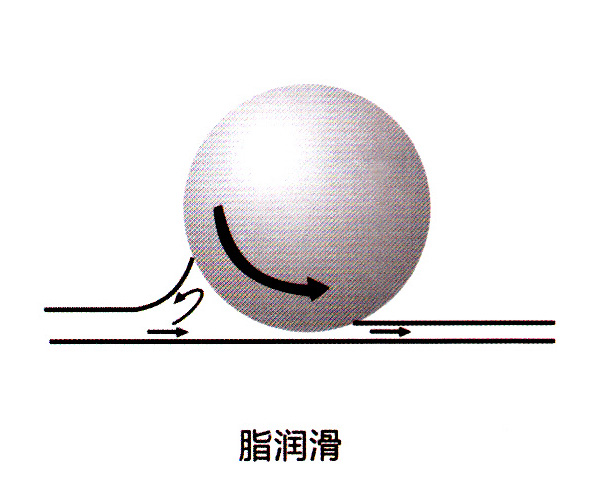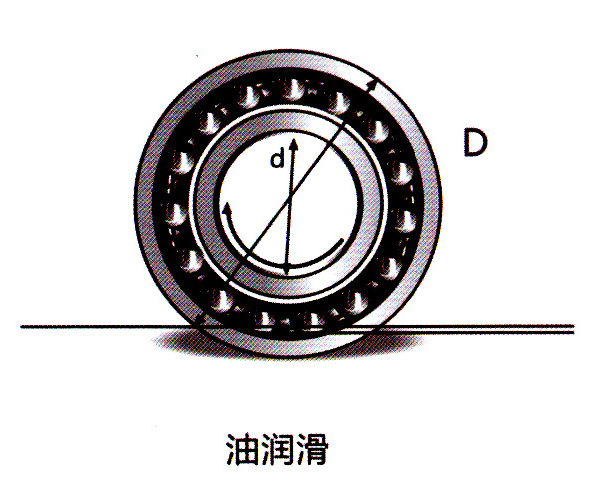LUBRICATION OF BEARINGS
The purpose of bearing lubrication is to form a thin oil film on the surface of the rings and rolling elements to prevent direct metal contact, thereby avoiding wear and shortening of bearing life. In addition, the lubricant reduces the noise and friction in the bearing operation, improves the running characteristics, and has the functions of protecting wear and dissipating heat. Commonly used lubricants include lubricating oil and grease, which should be based on different applications and different environments. , Choose the correct lubricant to optimize the bearing performance.
Grease lubrication

Grease lubricants are easier to use than oil lubricants, because of their viscosity, grease is more durable and only requires simple sealing equipment. Grease is difficult to change, because the usual method is to press the grease into the device to make the new grease squeeze out the old grease. Generally speaking, the grease of Chau Zhandu base oil is more suitable for low temperature and high speed operation, while the grease of high viscosity base oil is suitable for heavy load.
Grease oil

Oil lubrication is more suitable for use under high-speed and high-temperature conditions. It can effectively take away the heat during bearing operation.
The viscosity of the oil determines the effect of oil lubrication. If the viscosity is too low, the oil film will not be formed sufficiently, and if the viscosity is too high, the viscous resistance will increase and the temperature rise will increase. Generally, the higher the rotation speed, the lower the lubricating oil viscosity; the greater the load, the higher the lubricating oil viscosity.
The basic components of grease are base oil, thickener and additives.
Base oil
The mass fraction of base oil in the grease accounts for 75-96%, and its performance mainly depends on the properties of the base oil, especially the low temperature fluidity and the service life at high temperature are closely related to the base oil. Generally, low-viscosity base oil grease is suitable for low temperature and low load. When the grease has high viscosity base oil, it is suitable for high temperature and high load. There are two types of base oils: mineral oil and synthetic oil. The most commonly used synthetic base oils are: lipid oils, fully hydrocarbon oils, perfluoropolyethers, silicone oils and polyphenylene ethers.
Thickener
Thickeners are generally 4-20% in quality and fraction of thickeners. Its function is to suspend the base oil, reduce the fluidity of the base oil, and improve the adhesion between the oil and the friction surface. For example, the sodium soap base reacts with water and forms a kind of latex, which cannot be used in bearings operating in high-temperature atmosphere.
Additive
The mass fraction of base oil in the grease is 0-5%. Additives are used to improve the performance and life of the grease. According to its function, it can be divided into: tackifier (strong adhesion), antioxidant, extreme pressure agent , Corrosion inhibitors, etc.
Rotation torque, grease characteristics and filling volume
The characteristics of the grease (viscosity, penetration, etc.) and the grease filled basin will affect the rotation torque of the bearing, which will further affect the rotation speed and cause temperature rise. Generally speaking, as the filling of lubricant increases, the rotational force increases, which will cause temperature rise and speed fluctuations. For the same grease filling, the higher the viscosity, the larger the rotation torque.
The following table lists some of the problems that occur due to the increase in rotating torque:
Temperature rise:
Phenomenon: The bearing temperature is getting higher and higher, and the bearing rotation causes excessive agitation of the lubricant, resulting in a shearing effect, which causes the temperature to rise.
Method: reduce lubricant filling star and change the type of lubrication groove
Can’t meet the speed requirement:
Phenomenon: Sometimes the motor cannot reach the design speed and there is too much grease
Method: choose soft lubricant
Excessive power consumption:
Phenomenon: The motor or engine consumes more power than expected, too much grease, high penetration of the lubricant, lubricants can cause this problem
Method: reduce grease filling and replace grease type
Exceeding the normal workflow:
Phenomenon: When the motor is running, the working current is too high, the amount of grease filled, and the penetration of the soft agitated grease
Method: choose soft agitated type of grease, less grease filling
Speed fluctuation:
Phenomenon: When the bearing rotation speed increases, speed fluctuations begin to appear, and grease floods into the rolling element rotating raceway
Method: reduce the amount of grease filled, use groove-type grease, use grease with high softness

